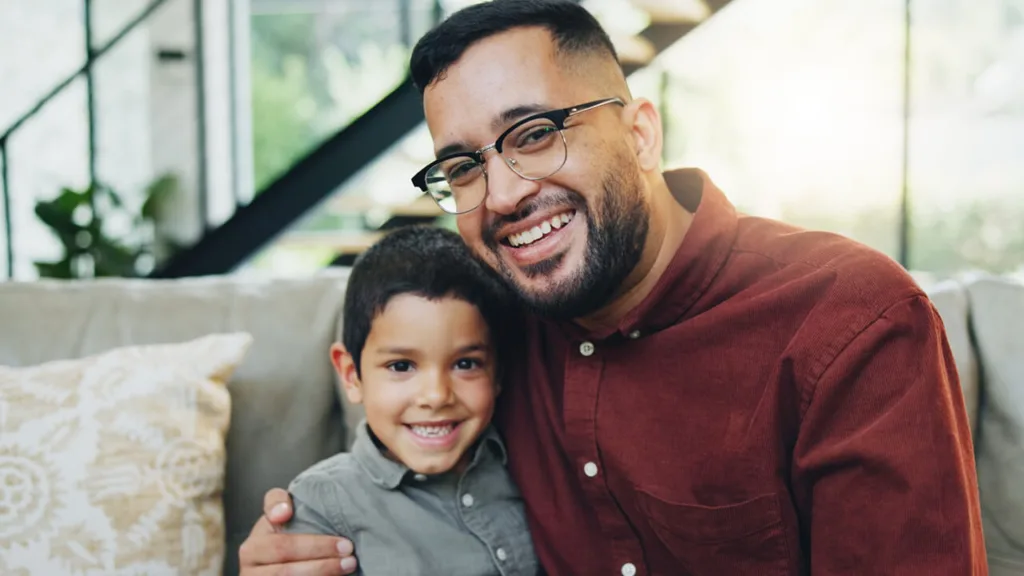Can I Bring My Son to US with Green Card?

If you’ve been asking yourself, “Can I bring my son to the US with a green card?” you’re asking a very important and completely understandable question. If you are a lawful permanent resident, you have probably worked hard to build a life in the U.S., and reuniting with your children is a natural next step. The good news is that you can sponsor your children to come legally to the USA. Immigration law allows for family reunification. There is a legal process you can follow to bring your children legally to the USA. However, the exact steps and the timeline vary greatly depending on your child’s age and marital status.
Every year, more than 300,000 green card holders apply to bring a spouse or child to the U.S., according to data from the Department of Homeland Security. However, while the law does allow for family petitions, the process and waiting periods vary according to your and your children’s circumstances.
For example, if your son is over the age of 21 and unmarried, the wait time can stretch to 8 years or longer, sometimes significantly more, depending on where he’s from, as shown in the U.S. Department of State’s Visa Bulletin.
Our legal team at Moumita Rahman – Immigration Attorneys understands how important reuniting with your children and securing their future is for you. In this guide, we’ll explain how to bring your children to the U.S. with your green card, who qualifies, how long it takes, and what documents are required.
Let’s walk through this together, step by step, without complex legal jargon.
Can a Green Card Holder Sponsor Their Son?
If you are a legal permanent resident or Green Card holder, you have the legal right to petition for your children to obtain legal resident status. They can be biological, adopted, or stepchildren, as long as you can prove a valid parental relationship.
However, the immigration process changes depending on two main factors: your children’s age and whether or not they are married. These details determine their placement in the family preference visa categories.
Unmarried Children Under 21
Unmarried children under 21 are one of the easiest and fastest groups of people legal permanent residents can bring over to the USA legally. This group falls under the F2A category, which is the top tier in the family second preference system. Children under 21 who are unmarried receive higher priority than older or married children.
Processing times generally range from 1 to 2 years, depending on your child’s country of origin and the current visa bulletin dates.
If your children live outside the U.S., they can complete the immigration process at a U.S. consulate in their country. This is known as consular processing.
Unmarried Sons Over 21
A frequently asked question we receive is: How long does it take to sponsor my son, who is over 21?
Petitioning for a child who is over 21 years of age falls under the F2B category, which applies to unmarried adult children (over 21) of legal permanent residents. Demand in this category is high, and visa availability is limited; this is why the wait is significantly longer, averaging 7 to 10 years.
For example, the July 2025 Visa Bulletin shows that applicants from Mexico under the F2B category had a priority date of July 2005. This means that some people have been waiting for 20 years for their adult children to receive their permanent legal status in the USA.
If your child is close to their 21st birthday, you can apply to retain their minor status for immigration purposes. The Child Status Protection Act (CSPA), allows people to retain their minor status for immigration purposes if they turned 21 during the process.
Married Children
If you are wondering, “Can I apply for my son, who is married, to obtain a Green Card?” the short answer is: If you are a green card holder, then no; but if you are a naturalized citizen, then yes.
Unfortunately, green card holders cannot sponsor married children, even if the petition was filed while their children were single. If your child gets married during the process, the petition is automatically void under both F2A and F2B.
However, if you become a US citizen, you can petition your married children. Once naturalized, you can apply under the F3 category, which is specifically for married sons or daughters of U.S. citizens.
What Documents Are Required to Petition for My Children?
If you are wondering: “How to bring my son to the US, if I have a Green Card?” To begin the process, you must file Form I-130, Petition for Alien Relative, with the USCIS. This is the foundational step in sponsoring your son and proves your familial connection.
Required documents include:
- A copy of your Green Card
- Your son’s birth certificate that lists you as their parent
- A copy of your son’s photo ID or passport
- Filing fee of $535 (as of June 2025)
If you’re sponsoring a stepchild or adopted child, you’ll need to submit additional documents. For example, for adopted children, the adoption must have occurred before age 16. For stepchildren, the marriage that created the stepparent relationship must have occurred before the child turned 18.
Can a Green Card Holder Petition for Other Relatives?
This is a common question for legal permanent residents and their families: “Can a green card holder help other family members come to the U.S. legally?”
While lawful permanent residents enjoy many immigration rights, the scope of who they can sponsor is limited compared to U.S. citizens.
The U.S. family-based immigration system is organized by preference categories that vary depending on your immigration status and the relationship to the family member.
Who Can You Sponsor as a Green Card Holder?
Under current immigration laws, green card holders can use Form I-130 to sponsor:
- Spouse, husband or wife
This also falls under the F2A category and is one of the fastest-moving family-based visa categories, especially when listed as “current” in the Visa Bulletin. This means that there are no waiting lists and limits. - Unmarried Children
Includes both minor and adult sons or daughters, as long as they are not married. Whating times depend on the child’s age and their country of origin.
- Children under 21: through Form F2A. Unmarried children under 21 have higher priority.
- Children over 21: through Form F2B. They have lower priority and a longer waiting period.
- Children under 21: through Form F2A. Unmarried children under 21 have higher priority.
Which Relatives are You Not Allowed to Sponsor as a Green Card Holder?
There are many family relationships that green card holders cannot petition for until they become U.S. citizens. These include:
- Parents
Only U.S. citizens aged 21 or older can sponsor parents. They fall into the “immediate relatives” category and do not face visa caps or long wait times. - Siblings
You must be a U.S. citizen to petition for a brother or sister. This falls under F4 and can take 15+ years due to extreme demand. - Married Sons or Daughters
As mentioned, green card holders cannot petition for married children. If your unmarried son gets married during a pending petition, it is automatically canceled unless you’ve already become a citizen. - Extended family
A legal permanent resident cannot sponsor extended family members.
How Can You Expand Sponsorship Options?
If you want to petition for a wider range of family members, the only legal path is to naturalize as a U.S. citizen. Once you become a citizen, you can:
- Sponsor parents (no visa wait)
- Sponsor married sons/daughters (F3 category)
- Sponsor siblings (F4 category)
Becoming a citizen also gives your petition priority over others, making processing faster and reducing the risk of your case being denied or delayed. If you are unsure if you qualify to become a U.S. citizen, you can talk to our team of immigration lawyers to review your case.
What Are the Benefits for Children Who Receive a Green Card?
Once your children receive a green card, they unlock several valuable benefits:
- They can live, work, and study in the U.S. legally.
- After 5 years, they can apply for U.S. citizenship.
- They gain access to federal education aid, employment options, and legal protections.
- He may also be eligible to petition for other relatives in the future
How Long Does It Take for a Mother to Sponsor Her Children?
The processing time for a family petition from a mother to her son depends on:
- Whether the son is under or over 21
- Whether he is married or single
- The mother’s immigration status. Is she a resident or a citizen?
Here’s a rough breakdown of the timelines:
- Resident mother + unmarried son under 21: 1–2 years of process
Resident mother + unmarried son over 21: 7–10 years of process, depending on the child’s country of origin. - Citizen mother + unmarried son under 21: Less than 1 year of process.
- Citizen mother + married son: 10+ years of process.
Always refer to the monthly Visa Bulletin published by the U.S. Department of State for the most current timelines.
What If I’m Undocumented and Want to Bring My Son to the U.S.?
If you’re undocumented, the process to bring your children becomes more complicated, but it’s not impossible. You cannot file family petitions until your own immigration status is resolved.
However, there may be alternative paths, including:
- Adjusting status through asylum, VAWA, or TPS
- Leaving the country voluntarily and applying for reentry via consular processing
- Applying for humanitarian parole, DACA (for children), or other programs
Each case is unique. If you are not a citizen and don’t have legal permanent resident status, contact your trusted immigration lawyers to explore the legal pathways to reunite with your family.
What If I Become a U.S. Citizen Midway Through the Process?
Many green card holders become citizens while their family petitions are still pending. If that happens, you can upgrade the petition and, in some cases, drastically reduce wait times.
Immigration law allows you to move your case to a new category if your status changes, as long as your family relationship remains valid and unbroken.
Here’s how it works:
- If you filed to sponsor an unmarried child under 21, and you become a citizen, your child becomes an immediate relative. This eliminates waiting times.
- If you filed to petition an unmarried adult child, your case moves from F2B to F1 when you become a citizen.
If your immigration status changes, contact an immigration attorney to explore the possible benefits of upgrading your petition.
Tips for Latino Immigrants
If you’re a Latino immigrant navigating the U.S. immigration system, here are some important steps to take:
- Start as early as possible: Immigration cases can take years, and delays can create problems.
- Track the Visa Bulletin: Stay informed about how your category is moving.
- Avoid fraud: Submitting fake documents or misrepresenting facts can permanently ruin your children’s legal immigration pathways and might affect your immigration process.
- Work with a lawyer: Immigration law is complex. The right legal advice can save you time, money, and stress.
Whether you’re starting the process or adjusting your plans, informed decisions and legal support are the best tools you have.
Take the First Step Toward Reuniting Your Family
If you’re still wondering, “Can I bring my son to the US with a green card?” The answer is yes. If you are a green card holder or a naturalized citizen, you can sponsor your children’s green card application process. Their age and marital status affect how long the process will take, but with proper documentation and support, you can succeed in legally reuniting and protecting your family. Whether you’re just beginning or in the middle of the process, you don’t have to go it alone. Our team at Moumita Rahman – Immigration Attorneys is here to support every step of your journey. When your family’s future is on the line, expert assistance can help you and your family legally cross the border and achieve safety and security.



